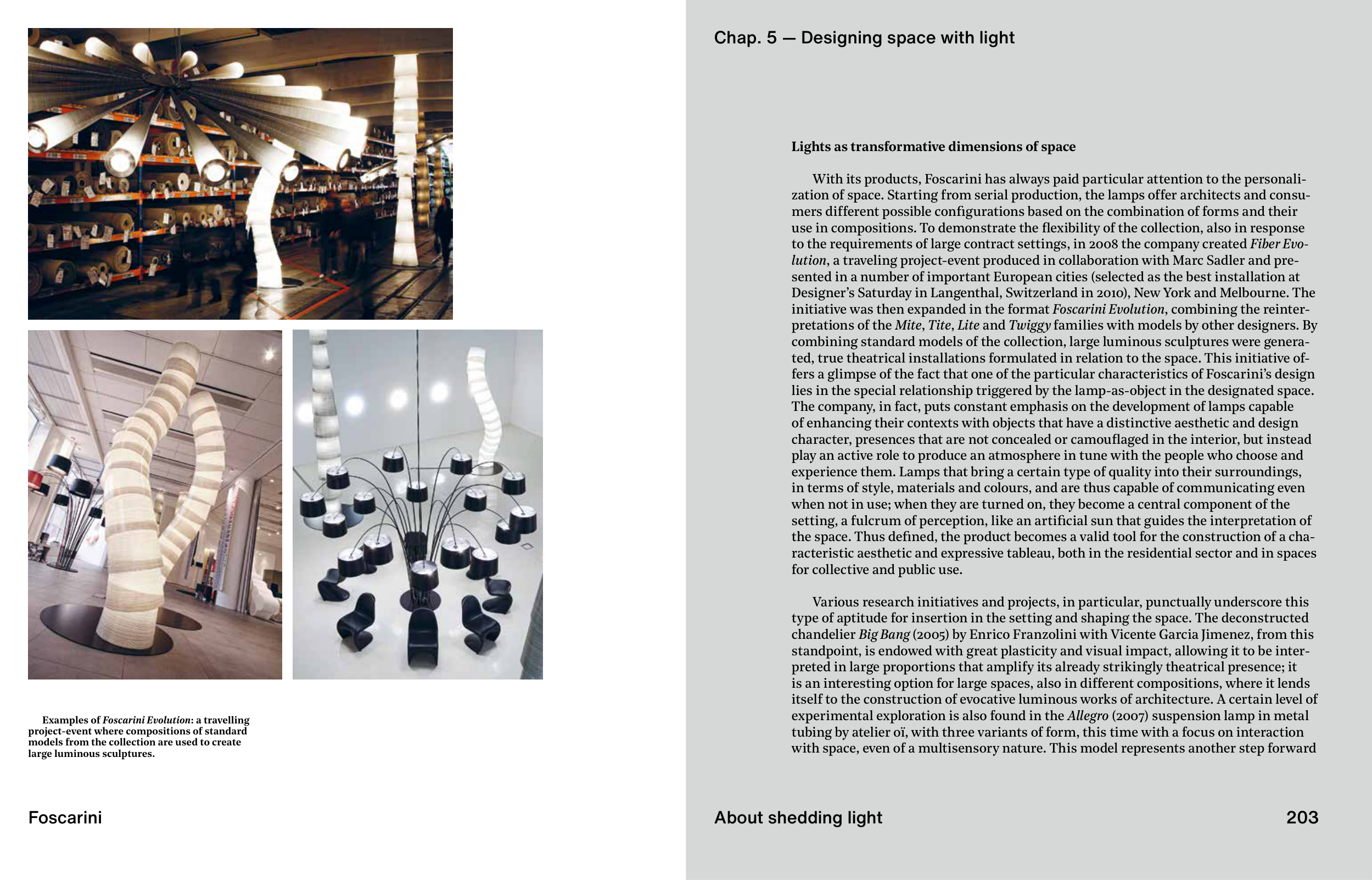Foscarini
Cap. 5 — Progettare gli spazi con la luce
203
Examples of Foscarini Evolution: a travelling
project-event where compositions of standard
models from the collection are used to create
large luminous sculptures.
About shedding light
Chap. 5 — Designing space with light
Lights as transformative dimensions of space
With its products, Foscarini has always paid particular attention to the personali-
zation of space. Starting from serial production, the lamps offer architects and consu-
mers different possible confi gurations based on the combination of forms and their
use in compositions. To demonstrate the fl exibility of the collection, also in response
to the requirements of large contract settings, in 2008 the company created Fiber Evo-
lution, a traveling project-event produced in collaboration with Marc Sadler and pre-
sented in a number of important European cities (selected as the best installation at
Designer’s Saturday in Langenthal, Switzerland in 2010), New York and Melbourne. The
initiative was then expanded in the format Foscarini Evolution, combining the reinter-
pretations of the Mite, Tite, Lite and Twiggy families with models by other designers. By
combining standard models of the collection, large luminous sculptures were genera-
ted, true theatrical installations formulated in relation to the space. This initiative of-
fers a glimpse of the fact that one of the particular characteristics of Foscarini’s design
lies in the special relationship triggered by the lamp-as-object in the designated space.
The company, in fact, puts constant emphasis on the development of lamps capable
of enhancing their contexts with objects that have a distinctive aesthetic and design
character, presences that are not concealed or camoufl aged in the interior, but instead
play an active role to produce an atmosphere in tune with the people who choose and
experience them. Lamps that bring a certain type of quality into their surroundings,
in terms of style, materials and colours, and are thus capable of communicating even
when not in use; when they are turned on, they become a central component of the
setting, a fulcrum of perception, like an artifi cial sun that guides the interpretation of
the space. Thus defi ned, the product becomes a valid tool for the construction of a cha-
racteristic aesthetic and expressive tableau, both in the residential sector and in spaces
for collective and public use.
Various research initiatives and projects, in particular, punctually underscore this
type of aptitude for insertion in the setting and shaping the space. The deconstructed
chandelier Big Bang (2005) by Enrico Franzolini with Vicente Garcia Jimenez, from this
standpoint, is endowed with great plasticity and visual impact, allowing it to be inter-
preted in large proportions that amplify its already strikingly theatrical presence; it
is an interesting option for large spaces, also in different compositions, where it lends
itself to the construction of evocative luminous works of architecture. A certain level of
experimental exploration is also found in the Allegro (2007) suspension lamp in metal
tubing by atelier oï, with three variants of form, this time with a focus on interaction
with space, even of a multisensory nature. This model represents another step forward
203


